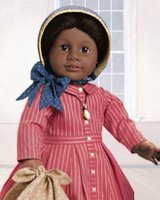The Deceiving Ring of Fire

It makes sense from a marketer’s perspective. What better time to exploit the works of a legendary singer/songwriter via a Broadway stage then right after his biopic has been critically acclaimed AND him and his wife are dead in the ground. The new musical "Ring of Fire" has about as much to do with Johnny Cash as "The Color Purple" has to do with Oprah. But why does Broadway need to deliver anymore, when the fact is a ticket buyer buys the marketing scheme, not the show. This so called musical has truly boiled my bitter blood albeit I am not a big Johnny Cash fan and I had comped tickets. So let this be a warning to those sweet country tourist that used to play Johnny Cash records with their grandpa while watching the crops grow, don't spend a red cent on this hoax!
In a recent article on playbill.com, many of the shows creators and cohorts have the audacity to try and explain its obvious flaws as if they were selling points. Pardon me if I can't embrace the novelty of a show with no plot, timeline, characters or real talent. As the article gently puts it:
"A book musical without traditional plot, a show with a multitude of characters, a broad-strokes sampling of the American experience — and the faith, family, roots, travel, home and relationships that come with that experience."
Broad strokes indeed, so broad that they forgot to paint a picture at all, not even an abstract image in the likeness of a musical. It is as if there was no attempt to engage the audience members by using that age old method of say...... storytelling. Instead the audience is offered infinite opportunities to clap along with a relentless ho-down that even Dolly would think it too much.
Without a positive note to play, the creators spend a lot of time highlighting all the things this show is not.
"It's not a concert at all," Tony Award-winning director Maltby (Ain't Misbehavin', Fosse) told Playbill.com. "[Producer] Jim Freydberg wants the tag to be 'ask anyone who's seen it,' because in a way, you can't describe what it is. It's a book musical without a book — a play made up of songs. It's not abstract, it's very specific," Maltby explained. "But it's variable: The couples progress through life. If you know Johnny Cash's story you can see the contours of his biography in the show. But it's not only his story."
Translation: "We don't know what it is or how to sell it other than using Johnny Cash, ask someone who has seen it, if they hated it, oh well, the tourist will buy the tickets regardless."
First let's examine what is currently in the running for my favorite quote of all time "it's very specific, but it's variable" ummmm...ok? Perhaps I could be drawn in by this complexity, like a Johnny Cash fan intrigued by his dark and layered personality? As for the "couples" they mean the six people close in age and mediocre talent. You can't just take the cast of Rent, spray some grey hair dye on the characters that have gained a little weight, put an old apron and overalls on the next two that aren't aging well, and then award the final two, and their face lifts, with the parts of the country teenagers, outfits courtesy of Hot Topic. And then expect the audience to see how these couples represent three generations of country family life and basic family values.
What "Ring of Fire" is, I am still not sure. All I remember is scanning the theater in disbelief after every song began (that subsequently totaled 38 times) as I became closer to the realization, that there was no dialogue and there was definitely no Johnny Cash. I hit musical showcase rock bottom, when one of the characters(?) sang an early Johnny Cash song called "Look at Them Beans". Which was a song about how the character(?) wished his dad lived long enough to see their most plentiful bean crop to date. And who can forget one of Johnny's classics, the ill-harmonized trio of "That Damn Egg Sucking Dog". I am guessing I was supposed to be tickled with the charm of country rhetoric. However this is where the show becomes insulting. It assumes that the audience will find a condescending entertainment value in watching the hicks dance. It was like a country minstrel show, brimming with bad grammar, stereotypical stereotypes, and embellished knee slapping for lack of better choreography.
“Ring of Fire” claims to capture the essence of Johnny Cash while portraying basic family values. If I am not mistaken, wasn't Johnny Cash a rebel drug addict? I highly doubt this ex-con’s essence lies within red rhinestone bordered denim skirts that flash under the expensive lighting of a Broadway stage. This obvious clash was best illustrated in the opening number where the oldest looking character (most grey spray) performs Johnny Cash's cover of a Trent Reznor song entitled "Hurt". At this point the audience is still under the impression that this is the story of Johnny Cash and are quick to pin this character as their Johnny to be. The Trent Reznor song was such a brilliant cover for Johnny Cash to sing at the end of his life. In his old shakey voice, it was haunting to hear Reznor's lyrics sung by a man that had literally lived through them. When this poor Broadway actor did his best to sing with that same arresting truth and pain, it didn't fall short, it couldn't even get off the ground so it could fall. It was stagnant, confusing and highly awkward.
It is clear that in this infinitely offensive musical (?), showcase(?), country circus(?), whatever, the bait and switch is among the slimmest I have seen. Believe it or not, the original title “The Johnny Cash Musical Showcase” was canned because, according to Playbill.com, “it suggested a Cash biography or sounded a little too much like a TV concert special starring Cash.” What exactly does “Ring of Fire” imply? Especially when it is coincidentally opening one week after its assumed movie counterpart “Walk the Line” is set to win a plethora of academy awards. I dare say that this transparent scheme was carefully planned, but not full proof. If there was ever a time for ticket buyers to express outrage at Broadway for banking on public stupidity, Ring of Fire is the perfect vehicle for this much needed backlash. It is one thing to continually insult the American consumer, we are used to the crafted dupe. This time they have exploited a deceased American legend, whose fans might not be the most docile of characters. The playbill alone, is a prototype for false advertising. And the only photos available to represent this musical are the ones I have posted. Take a look at this bait, do you think glitzy musical showcase?





